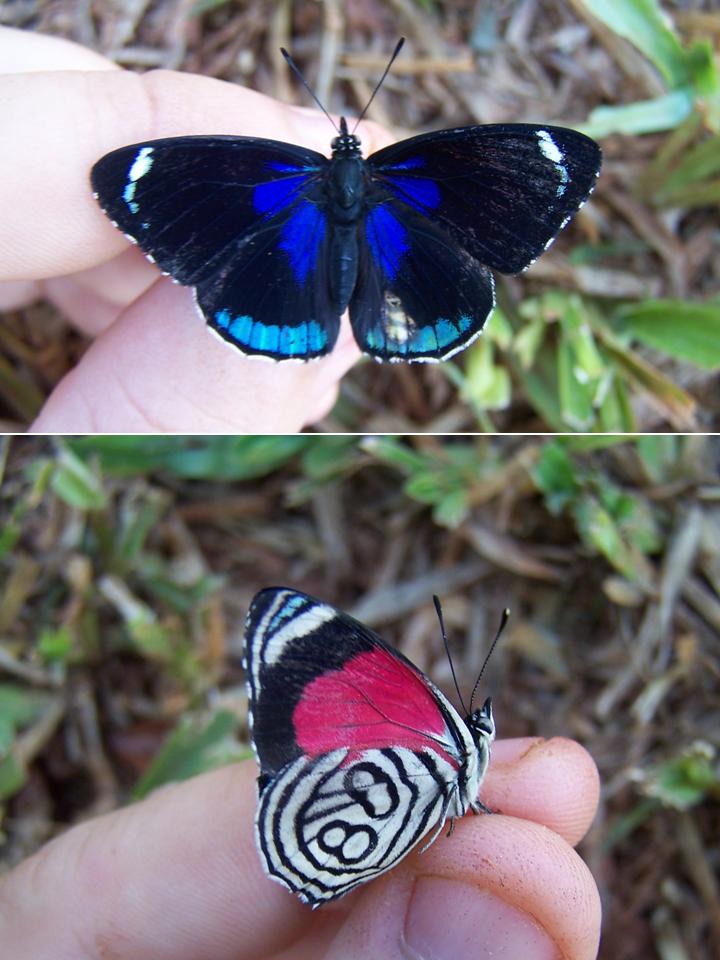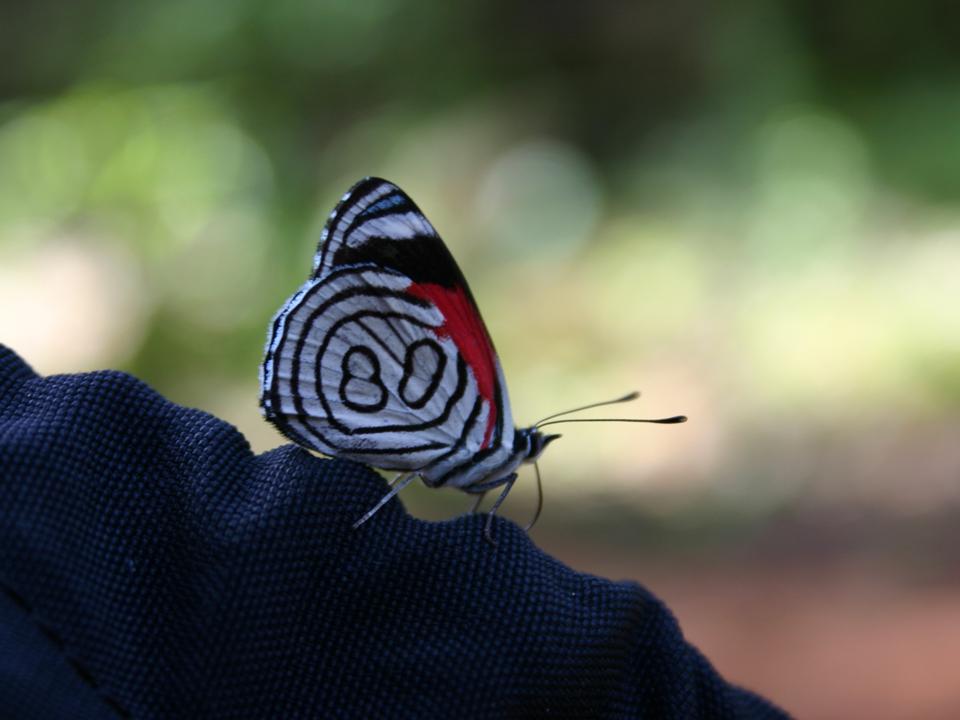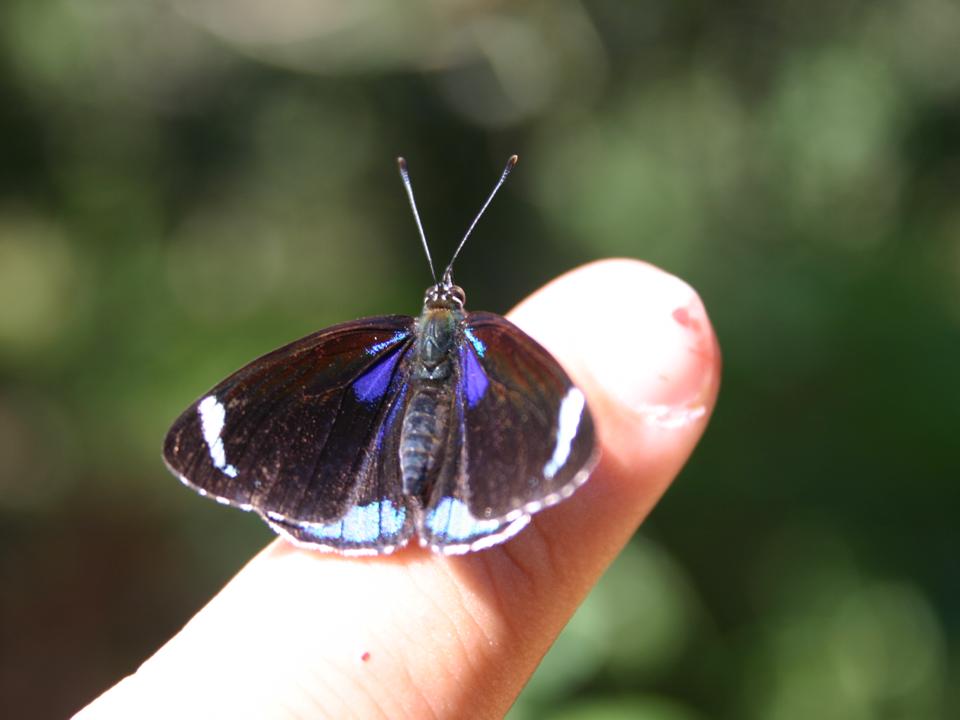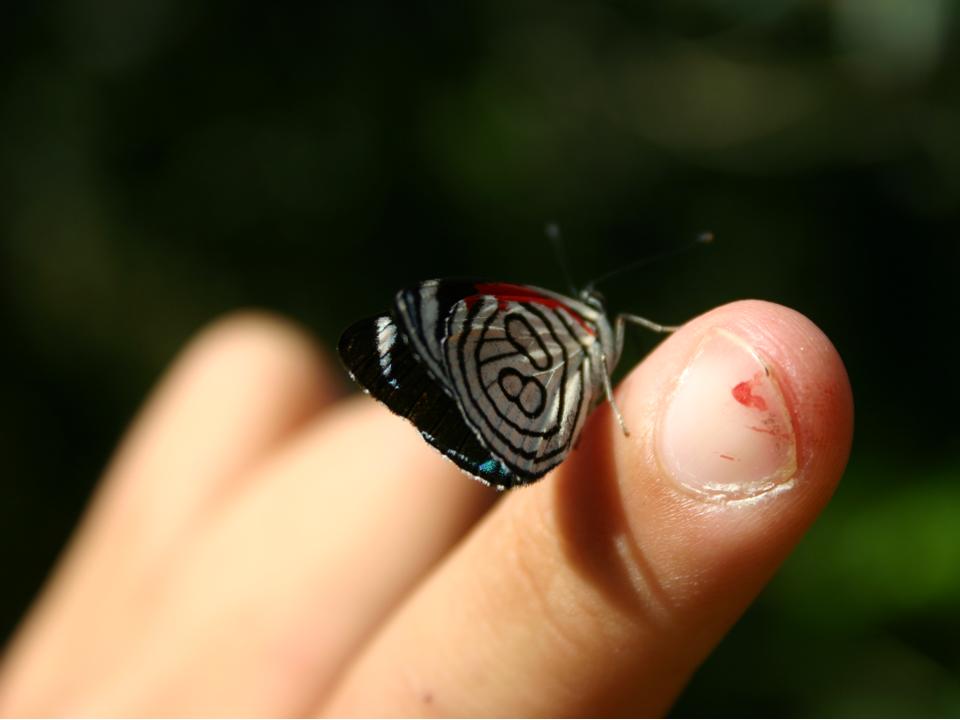

Designed by Paul Smith 2006. This website is copyrighted by law. Material contained herewith may not be used without the prior written permission of FAUNA Paraguay. Photographs on this web-site were taken by Paul Smith, Hemme Batjes, Regis Nossent,
Alberto Esquivel, Arne Lesterhuis, José Luis Cartes, Rebecca Zarza and Hugo del Castillo and are used with their permission.
Diaethria candrena candrena (Godart [1824])
ENG: Number Eighty, EightyButterfly
ESP: Ochenta
JIZ: Forewing long and triangular with pointed apices. Hindwing large and rounded with slightly undulated outer margin. Poses with wings folded, forewings almost completely obscured by large hindwing, but frequently sunbathes with open wings. Can be approachable. No sexual dimorphism. FLI: Flight fast and erratic within 1m of the ground, posing suddenly.
UPP: M/F (Fig 1&3) Forewing black with deep blue basal flush, most obvious in bright light. Broad but indistinct bluish-white subapical streaks towards the wing tips. Hindwing mostly black again with deep blue basal flush and broad submarginal turquoise band along part of the outer margin.
UND: M/F (Fig 1,2&4) Underside of forewing mostly red basally with broad black border stretching from tornus to postmedial area of costa. Outer margin of forewing thinly black with a thin blue subapical comma edged with black and broadly bordered white. Underside of hindwing mostly white with thin black outer margin and two thin black concentric bands bordering a distinct 80 design on the centre of the wing. The 80 pattern lacks black dots within the individual "digits".
BOD: Antennae black with white tips to clubs on underside. Upperside of head black with two pairs of small white spots. Upperside of thorax and abdomen black. Underside of abdomen greyish with white median line. Underside of thorax white, black laterally. Legs black above and white below. Labial palps black, white laterally. Eyes grey.
MMT: A small Biblid. CL - 20.5mm (20-21mm); BL - 16mm (15-17mm); AB - 8.2mm (7.5-9mm); WS - 43mm (40-46mm); HW - 2.8mm (2.5-3mm); AL - 10.3mm (10-10-5mm); n=2 (1M & 1Unsexed). (ECOSARA Biodiversity Database)
SSP: Ventrally easily confused with other members of the genus, though in most cases they bear a distinct 88 pattern on the hindwing. Dorsally they lack extensive pale blue areas on the forewing present in other Diaethria. Callicore butterflies and Paulogramma pyracmon are superficially similar but have a yellow rather than a white base colour to the underwing and extensive red on the dorsal forewing which is never present in Diaethria.
ABU: Frequent to abundant in suitable habitat.
HAB: Most common in humid forest and edge, less common in gardens in humid areas.
HOS: Plants in the family Celtidiceae including Celtis (Canals 2003).
Citable Reference: Smith P (2007) FAUNA Paraguay Online Handbook of Paraguayan Fauna Butterfly Species Account 21 Diaethria candrena
Last Updated: 29 November 2007.
References:
Canals G 2003 Mariposas de Misiones - LOLA, Buenos Aires.
ECOSARA Biodiversity Database
 | FIGURE 1 |
|
 | FIGURE 2 |
|
 | FIGURE 3 |
|
 | FIGURE 4 |
|
FIGURES 1 - PROCOSARA, PN San Rafael (Paul Smith March 07); 2-4 - Hotel Tirol, Departamento Itapúa (Regis Nossent June 05);

